Abstract
The concept that antigen has a continuous role in the recruitment and differentiation of immune progenitor cells was tested with optimum and suboptimum doses of heterologous erythrocytes in mice. These studies further evaluated an immune cell maturation scheme in which continuous antigenic stimulation is required for both the recruitment of `antigen-sensitive units' and the expansive proliferation of a distinct sensitized cell compartment, which undergoes irreversible differentiation to functional antibody-forming cells. Haemolytic plaque-forming cell capacity during both the primary and secondary immune reactions were studied, both in the intact animal and with the spleen cell transfer technique. This in vivo culture technique was used to measure the sensitized cell compartment in the absence of existing antibody regulatory mechanisms. The results clearly demonstrate a higher detectable secondary immune capacity in the suboptimum antigen dose group than in the optimum antigen dose group. This was demonstrated for both the 19S and 7S cellular responses, as well as with humoral antibody levels measured in the spleen cell recipient mice. It can be concluded that in the presence of a suboptimum dose of antigen, which rapidly diminishes during the early intervals of the primary response, there is adequate recruitment with subsequent preservation or rescue from antigen-mediated depletion of the sensitized cell compartment, at the expense of the detectable primary response.
Full text
PDF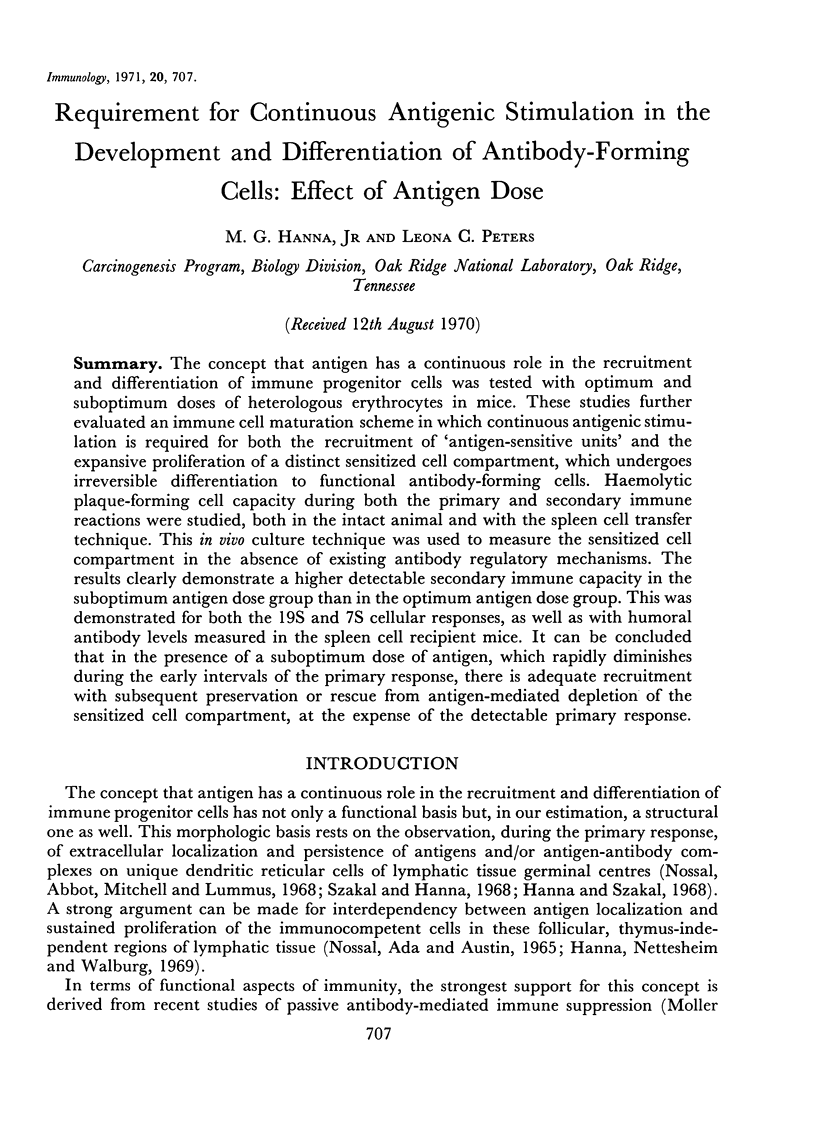
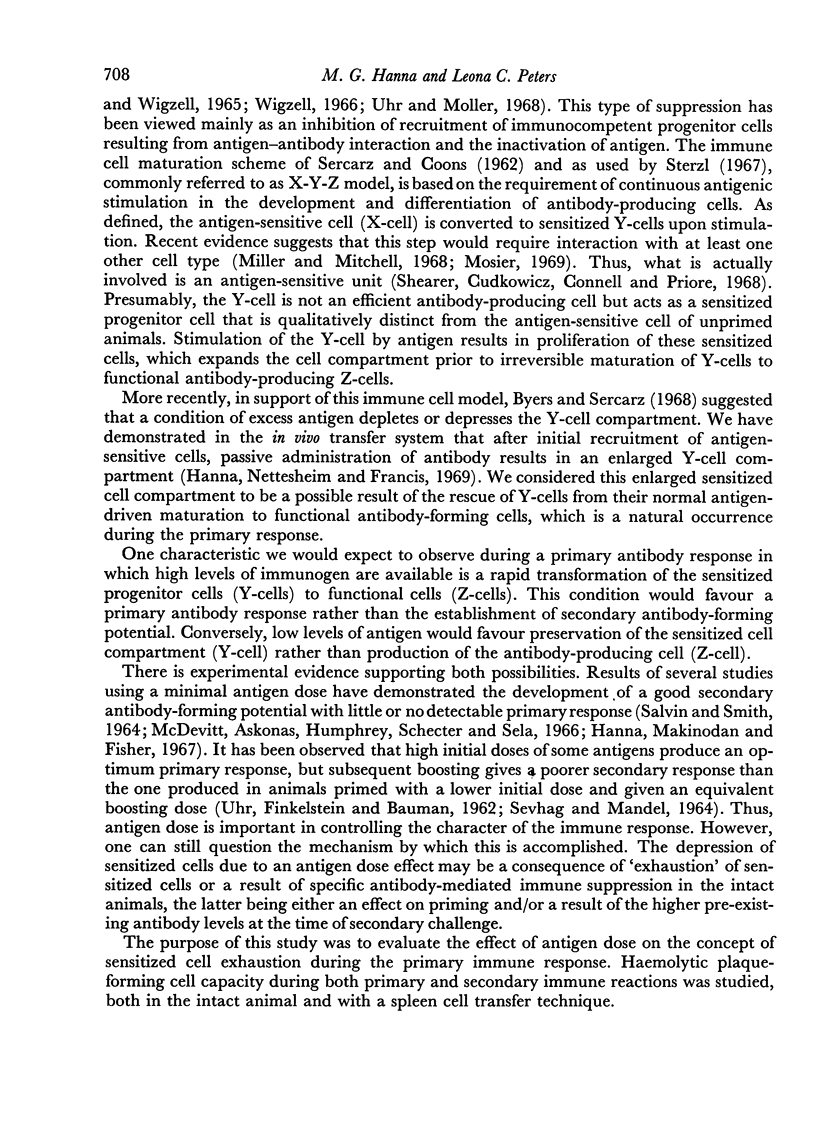
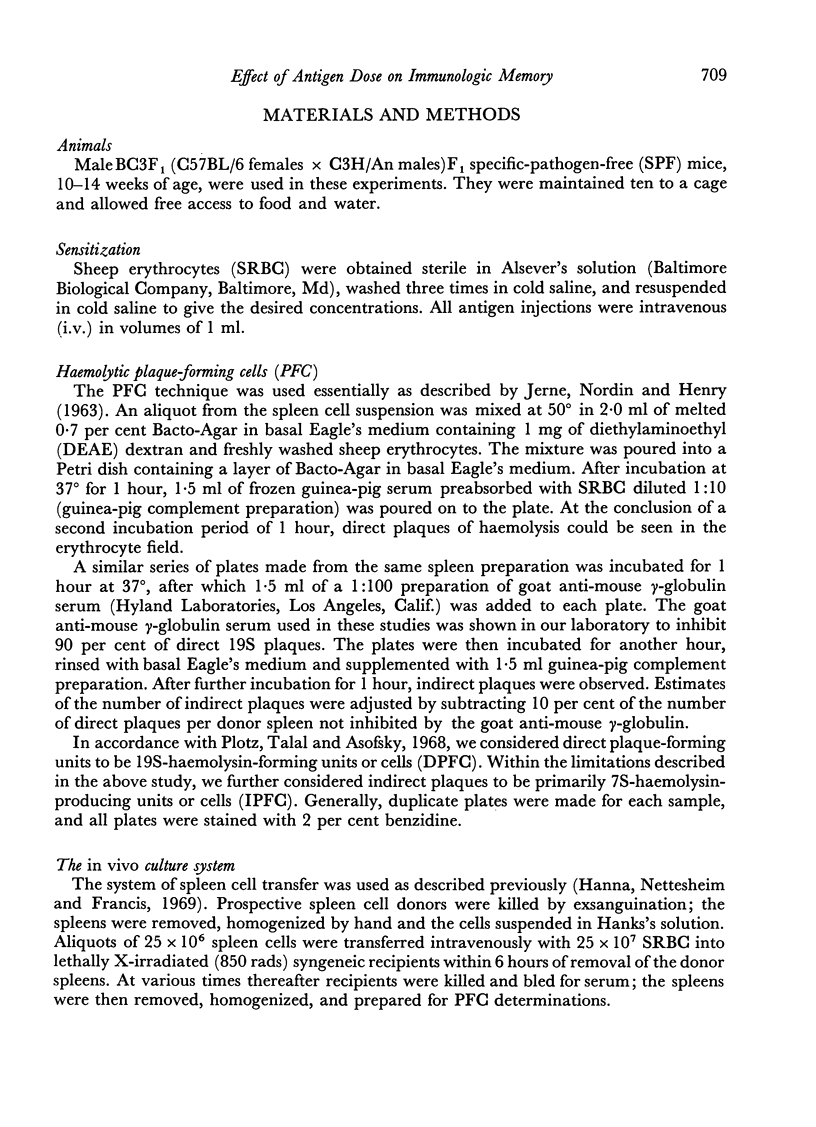
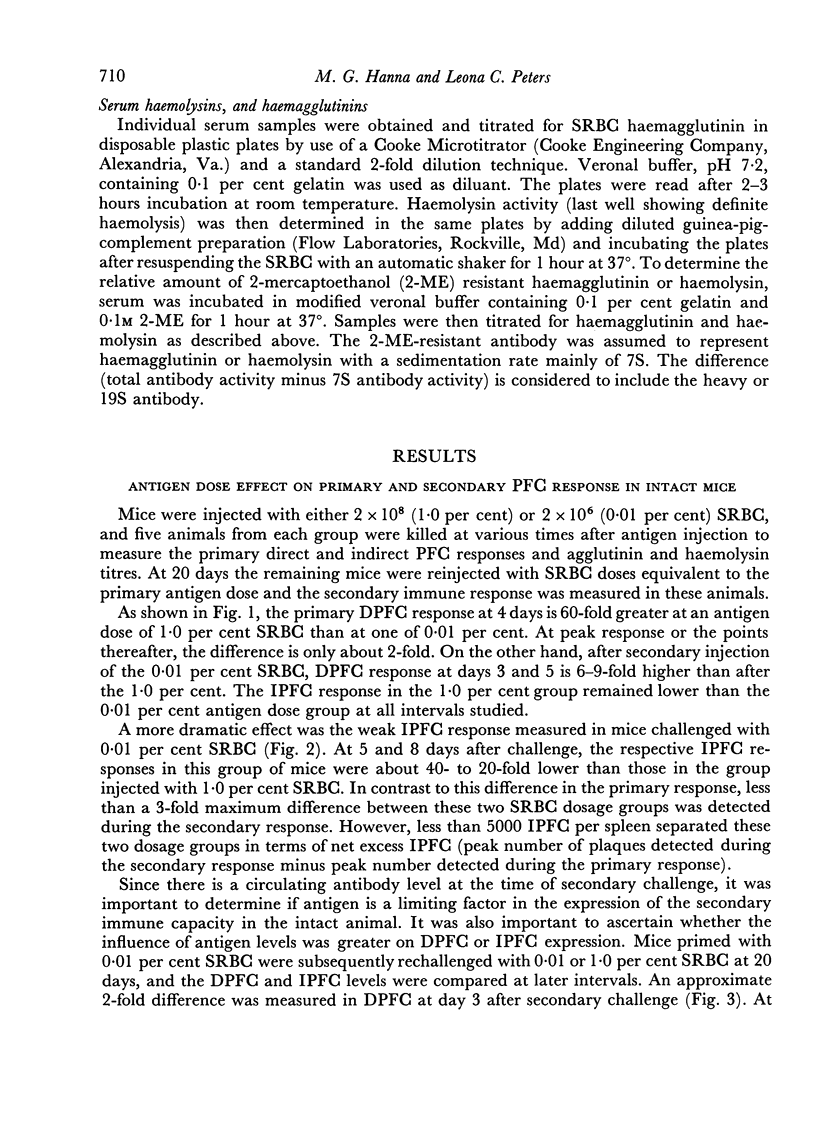
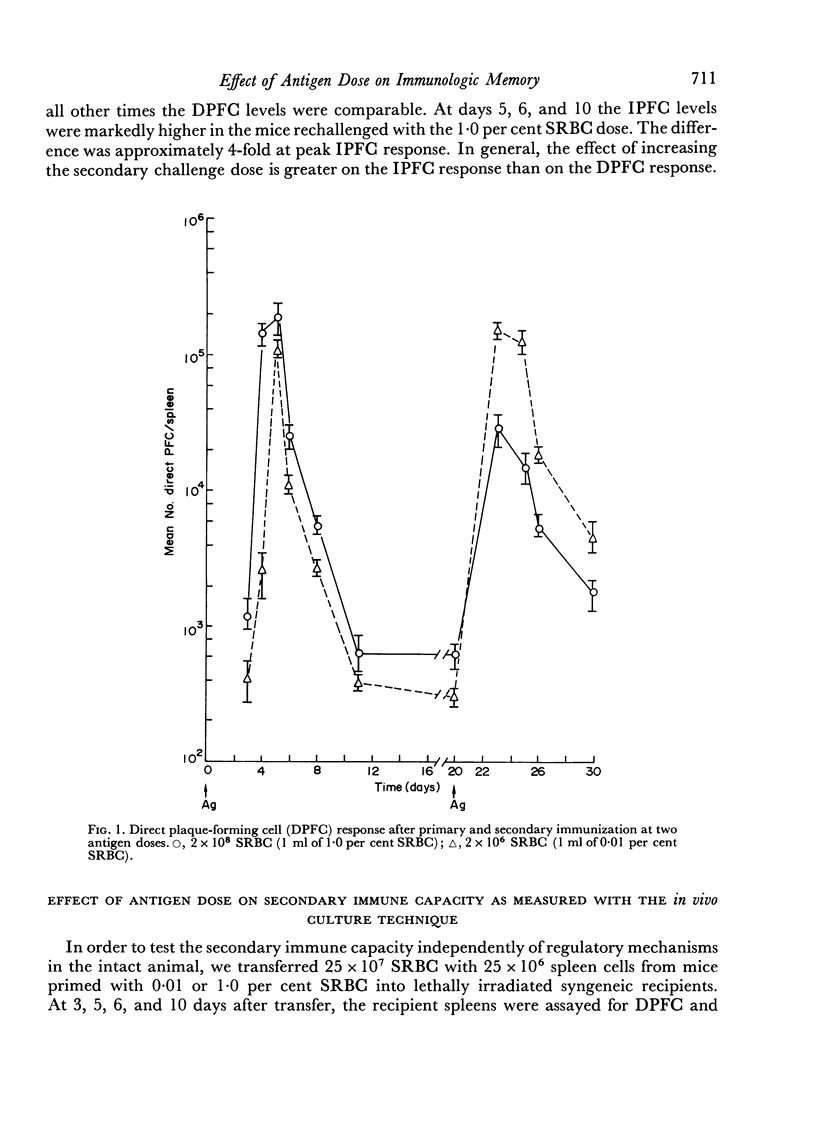
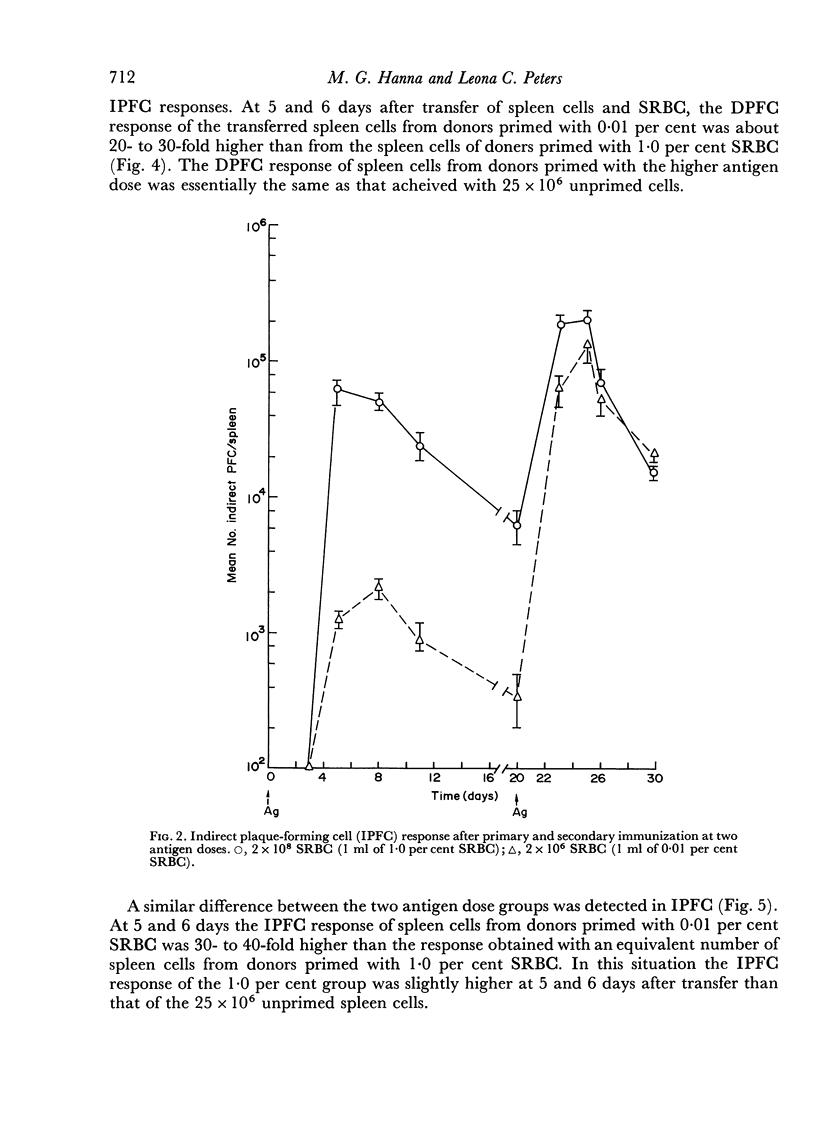
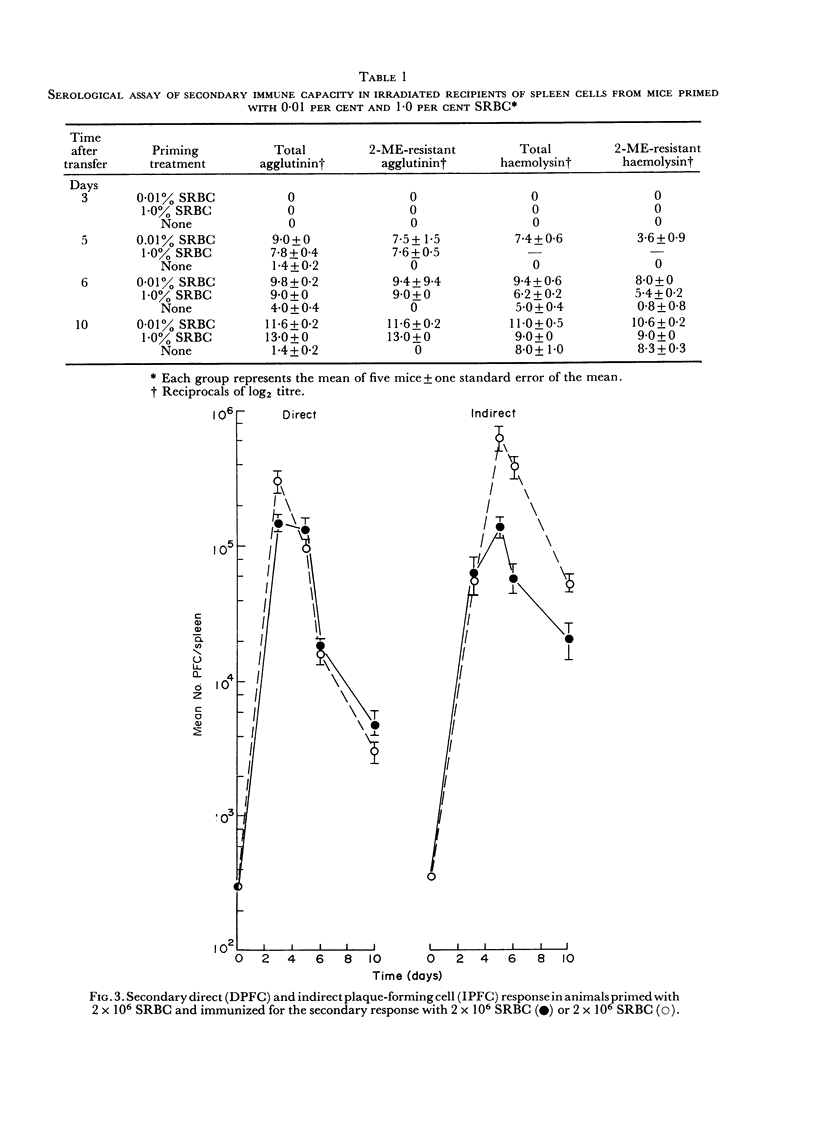
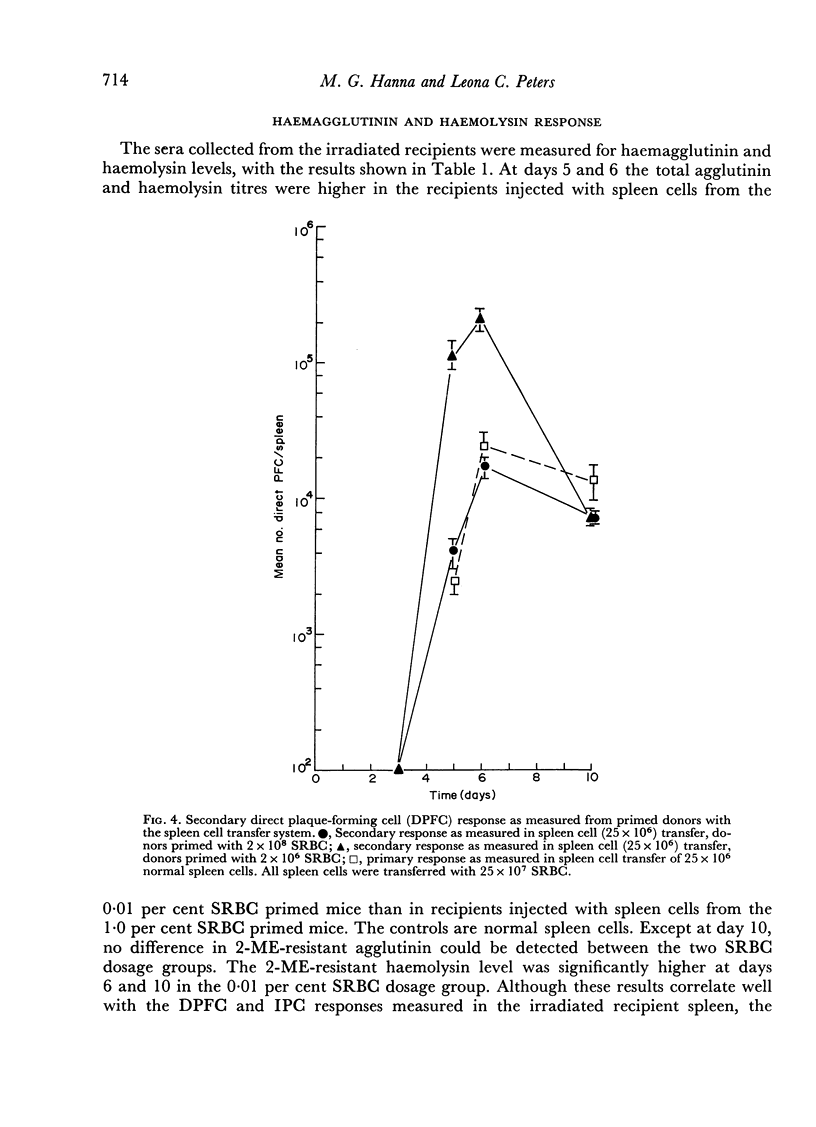
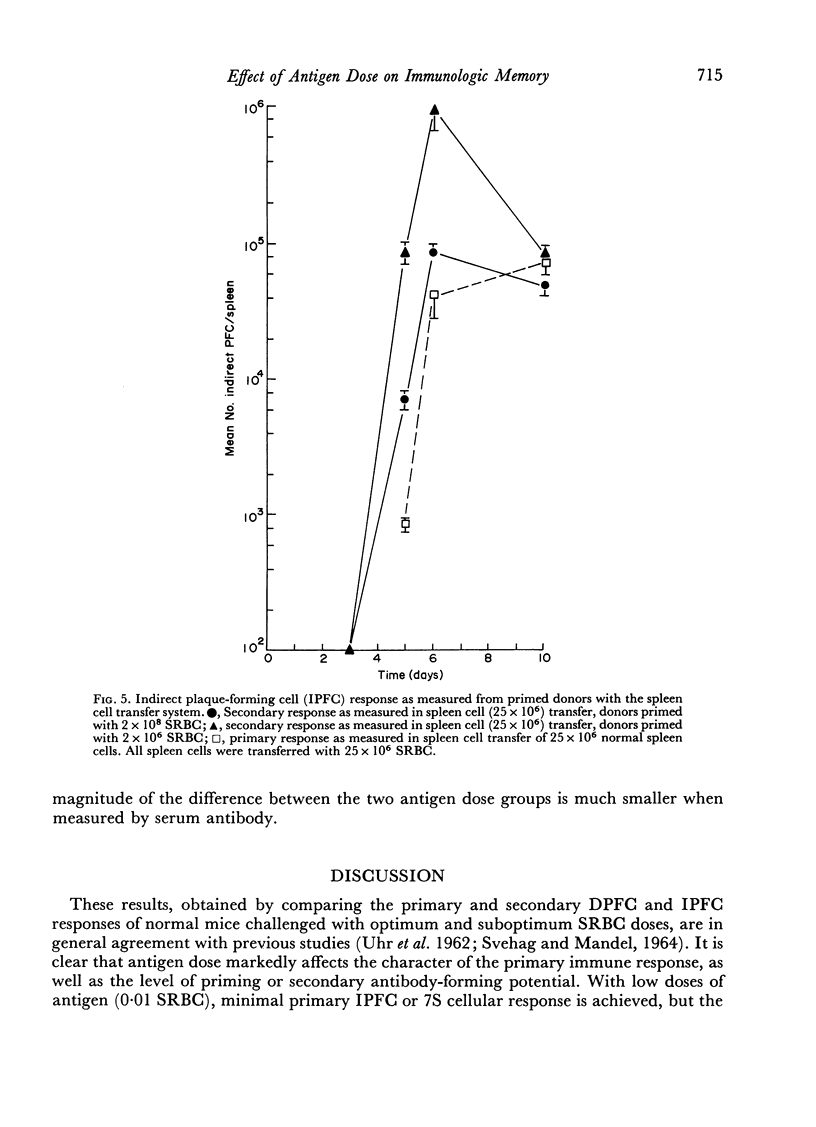
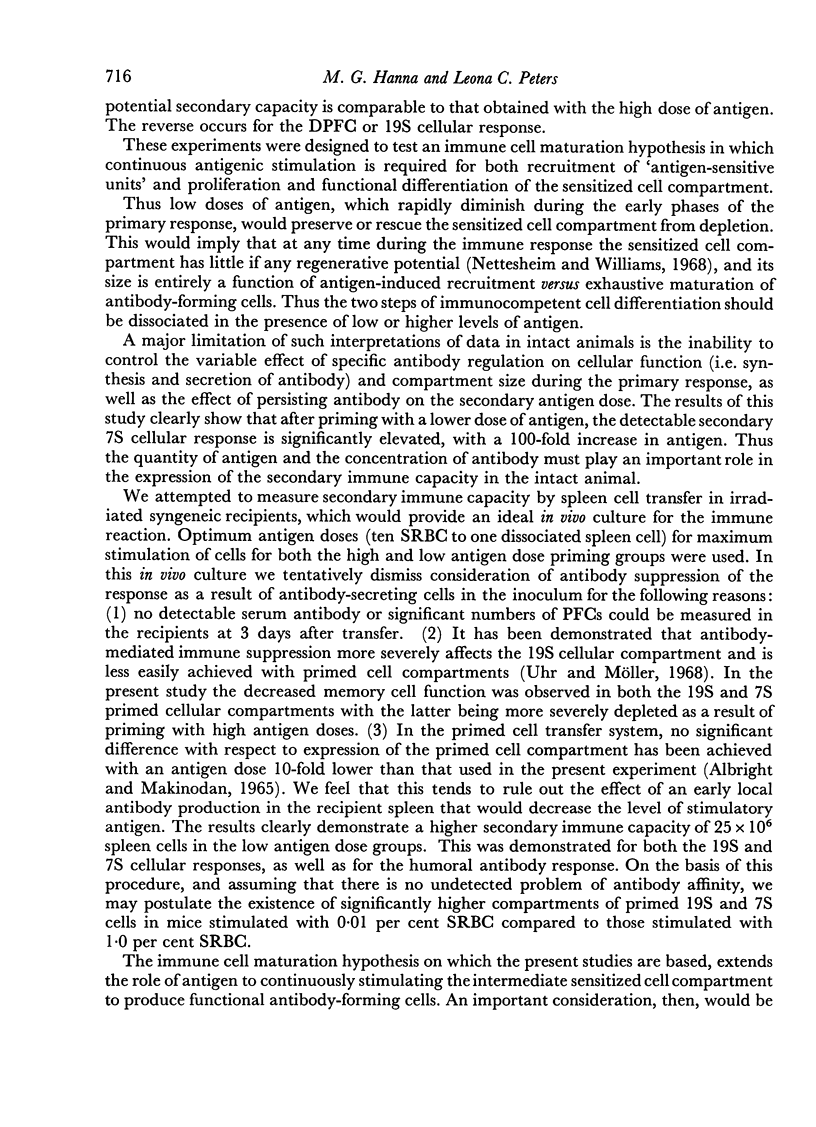
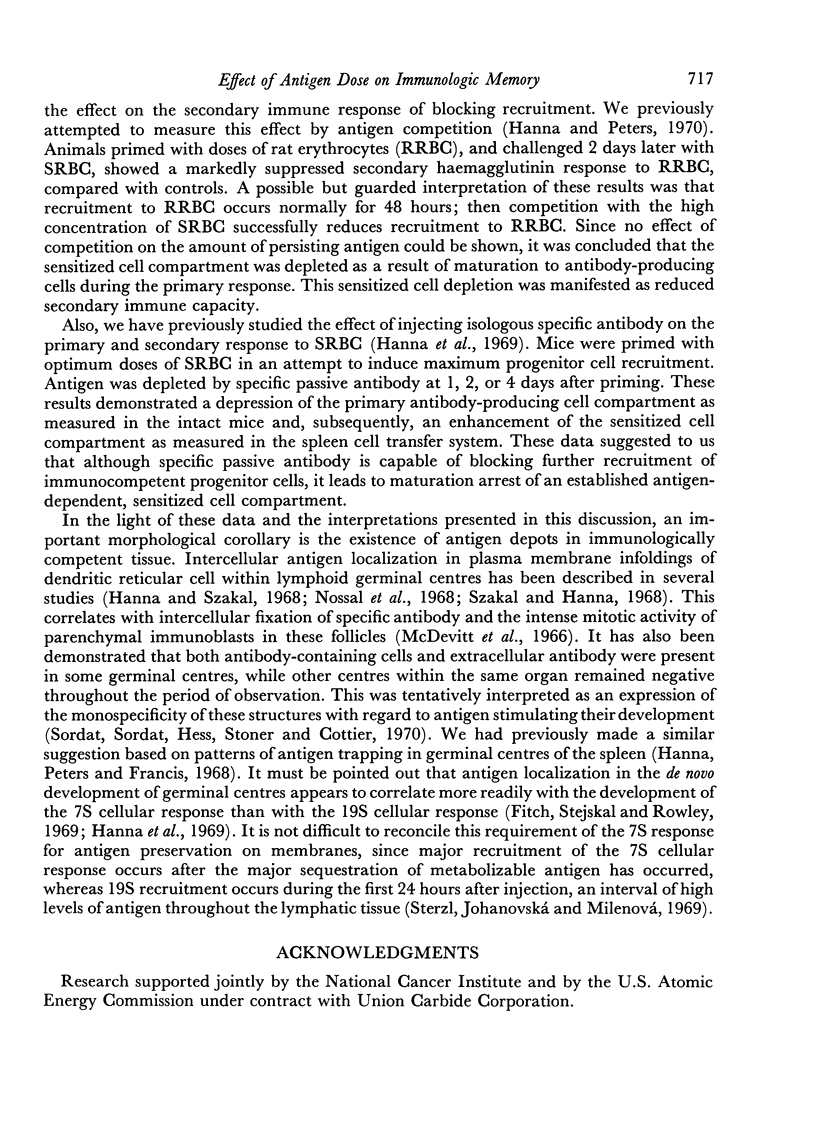
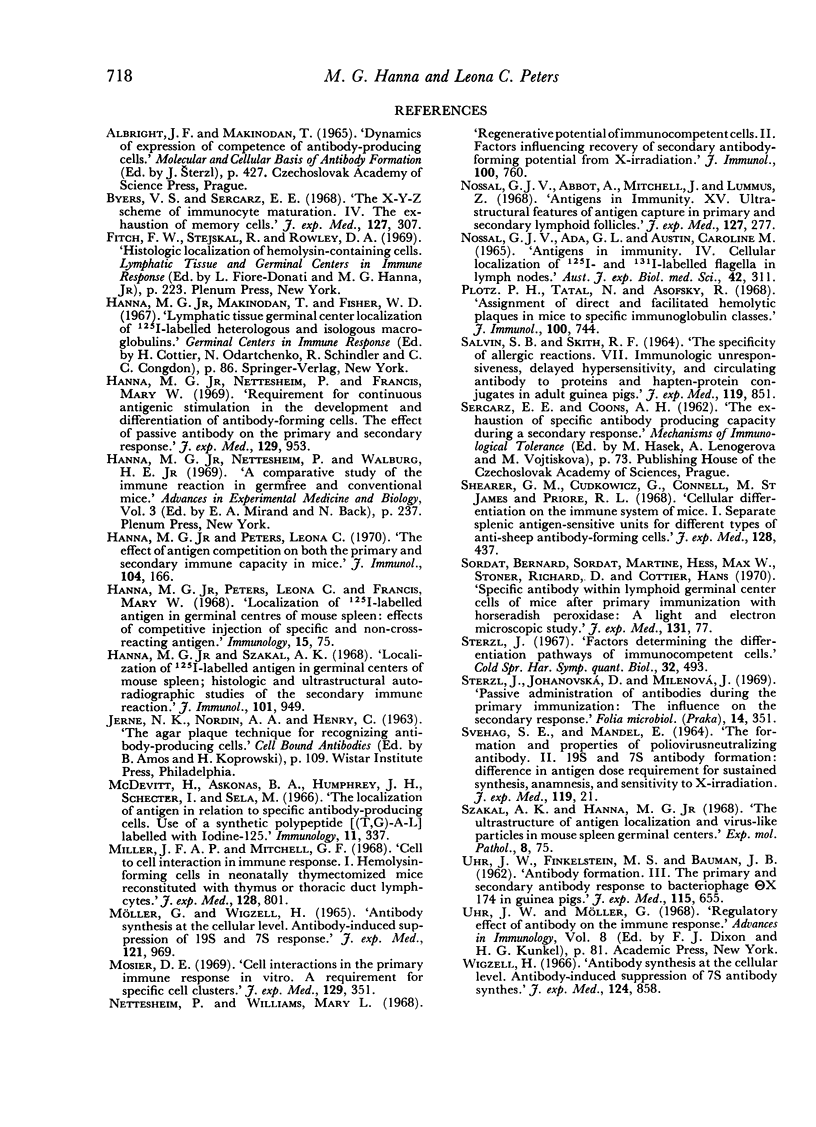
Selected References
These references are in PubMed. This may not be the complete list of references from this article.
- Byers V. S., Sercarz E. E. The X-Y-Z scheme of immunocyte maturation. IV. The exhaustion of memory cells. J Exp Med. 1968 Feb 1;127(2):307–325. doi: 10.1084/jem.127.2.307. [DOI] [PMC free article] [PubMed] [Google Scholar]
- Hanna M. G., Jr, Nettesheim P., Francis M. W. Requirement for continuous antigenic stimulation in the development and differentiation of antibody-forming cells. The effect of passive antibody on the primary and secondary response. J Exp Med. 1969 May 1;129(5):953–971. doi: 10.1084/jem.129.5.953. [DOI] [PMC free article] [PubMed] [Google Scholar]
- Hanna M. G., Jr, Peters L. C. The effect of antigen competition on both the primary and secondary immune capacity in mice. J Immunol. 1970 Jan;104(1):166–177. [PubMed] [Google Scholar]
- Hanna M. G., Jr, Szakal A. K. Localization of 125I-labeled antigen in germinal centers of mouse spleen: histologic and ultrastructural autoradiographic studies of the secondary immune reaction. J Immunol. 1968 Nov;101(5):949–962. [PubMed] [Google Scholar]
- MOLLER G., WIGZELL H. ANTIBODY SYNTHESIS AT THE CELLULAR LEVEL. ANTIBODY-INDUCED SUPPRESSION OF 19S AND 7S ANTIBODY RESPONSE. J Exp Med. 1965 Jun 1;121:969–989. doi: 10.1084/jem.121.6.969. [DOI] [PMC free article] [PubMed] [Google Scholar]
- McDevitt H. O., Askonas B. A., Humphrey J. H., Schechter I., Sela M. The localization of antigen in relation to specific antibody-producing cells. I. Use of a synthetic polypeptide [(T,G)-A--L] labelled with iodine-125. Immunology. 1966 Oct;11(4):337–351. [PMC free article] [PubMed] [Google Scholar]
- Miller J. F., Mitchell G. F. Cell to cell interaction in the immune response. I. Hemolysin-forming cells in neonatally thymectomized mice reconstituted with thymus or thoracic duct lymphocytes. J Exp Med. 1968 Oct 1;128(4):801–820. doi: 10.1084/jem.128.4.801. [DOI] [PMC free article] [PubMed] [Google Scholar]
- Mosier D. E. Cell interactions in the primary immune response in vitro: a requirement for specific cell clusters. J Exp Med. 1969 Feb 1;129(2):351–362. doi: 10.1084/jem.129.2.351. [DOI] [PMC free article] [PubMed] [Google Scholar]
- NOSSAL G. J., ADA G. L., AUSTIN C. M. ANTIGENS IN IMMUNITY. IV. CELLULAR LOCALIZATION OF 125-I- AND 131-I-LABELLED FLAGELLA IN LYMPH NODES. Aust J Exp Biol Med Sci. 1964 Jun;42:311–330. [PubMed] [Google Scholar]
- Nettesheim P., Williams M. L. Regenerative potential of immunocompetent cells. II. Factors influencing recovery of secondary antibody-forming potential from x-irradiation. J Immunol. 1968 Apr;100(4):760–770. [PubMed] [Google Scholar]
- Nossal G. J., Abbot A., Mitchell J., Lummus Z. Antigens in immunity. XV. Ultrastructural features of antigen capture in primary and secondary lymphoid follicles. J Exp Med. 1968 Feb 1;127(2):277–290. doi: 10.1084/jem.127.2.277. [DOI] [PMC free article] [PubMed] [Google Scholar]
- Plotz P. H., Talal N., Asofsky R. Assignment of direct and facilitated hemolytic plaques in mice to specific immunoglobulin classes. J Immunol. 1968 Apr;100(4):744–751. [PubMed] [Google Scholar]
- SALVIN S. B., SMITH R. F. THE SPECIFICITY OF ALLERGIC REACTIONS. VII. IMMUNOLOGIC UNRESPONSIVENSSS, DELAYED HYPERSENSITIVITY, AND CIRCULATING ANTIBODY TO PROTEINS AND HAPTEN-PROTEIN CONJUGATES IN ADULT GUINEA PIGS. J Exp Med. 1964 May 1;119:851–868. doi: 10.1084/jem.119.5.851. [DOI] [PMC free article] [PubMed] [Google Scholar]
- SVEHAG S. E., MANDEL B. THE FORMATION AND PROPERTIES OF POLIOVIRUS-NEUTRALIZING ANTIBODY. II. 19S AND 7S ANTIBODY FORMATION: DIFFERENCES IN ANTIGEN DOSE REQUIREMENT FOR SUSTAINED SYNTHESIS, ANAMNESIS, AND SENSITIVITY TO X-IRRADIATION. J Exp Med. 1964 Jan 1;119:21–39. doi: 10.1084/jem.119.1.21. [DOI] [PMC free article] [PubMed] [Google Scholar]
- Shearer G. M., Cudkowicz G., Connell M. S., Priore R. L. Cellular differentiation of the immune system of mice. I. Separate splenic antigen-sensitive units for different types of anti-sheep antibody-forming cells. J Exp Med. 1968 Sep 1;128(3):437–457. doi: 10.1084/jem.128.3.437. [DOI] [PMC free article] [PubMed] [Google Scholar]
- Sterzl J., Johanovská D., Milerová J. Passive administration of antibodies during the primary immunization. The influence on the secondary response. Folia Microbiol (Praha) 1969;14(4):351–358. doi: 10.1007/BF02872703. [DOI] [PubMed] [Google Scholar]
- Szakal A. K., Hanna M. G., Jr The ultrastructure of antigen localization and viruslike particles in mouse spleen germinal centers. Exp Mol Pathol. 1968 Feb;8(1):75–89. doi: 10.1016/0014-4800(68)90007-5. [DOI] [PubMed] [Google Scholar]
- UHR J. W., FINKELSTEIN M. S., BAUMANN J. B. Antibody formation. III. The primary and secondary antibody response to bacteriophage phi X 174 in guinea pigs. J Exp Med. 1962 Mar 1;115:655–670. doi: 10.1084/jem.115.3.655. [DOI] [PMC free article] [PubMed] [Google Scholar]


